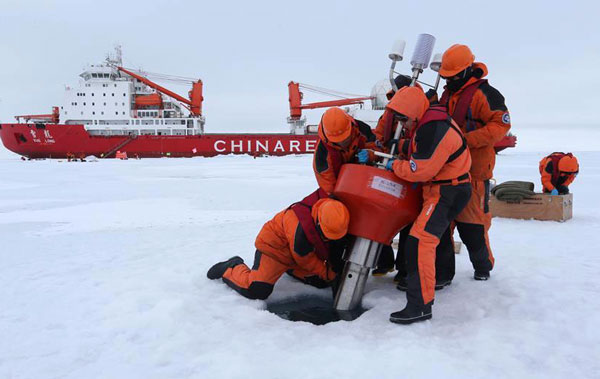China Keywords: Polar Silk Road
The Belt and Road Initiative, proposed by China in 2013, has reached more peoples and lands, and not even the Arctic has been left out.

China published a white paper on its Arctic policy on Jan. 26, pledging cooperative governance and elaborating on its vision for a "Polar Silk Road."
The document titled "China's Arctic Policy" issued by the State Council Information Office underscored that China has shared interests with Arctic States and a shared future with the rest of the world concerning the Arctic.
The land territories in the Arctic cover an area of about 8 million square km, with sovereignty belonging to Canada, Denmark, Finland, Iceland, Norway, Russia, Sweden, and the United States, while the Arctic Ocean has an area of more than 12 million square km, in which coastal and other countries share maritime rights and interests according to international law.
In July 2017, Russia and China agreed to carry out the Northern Sea Route cooperation and jointly build an "Ice Silk Road," the name at that time.
The Polar Silk Road via the Arctic is widely seen as the third arch of the Belt and Road, adding another sea route in addition to the South China Sea, the Indian Ocean, Africa and the Mediterranean, and the South Pacific and Oceania.
China hopes to work with all parties to build the Polar Silk Road through developing Arctic shipping routes, said the white paper.
China eyes joint development of oil, gas, mineral resources and other non-fossil energies, fishing, and tourism in the region, with Arctic states, while respecting the traditions and cultures of Arctic residents, including indigenous peoples, and conserving the natural environment.
The white paper promised more on scientific research and environmental protection in the Arctic.
Concrete steps will be taken to coordinate development strategies with the Arctic states, encourage joint efforts to build a blue economic passage linking China and Europe via the Arctic Ocean, enhance Arctic digital connectivity, and build a global infrastructure network.